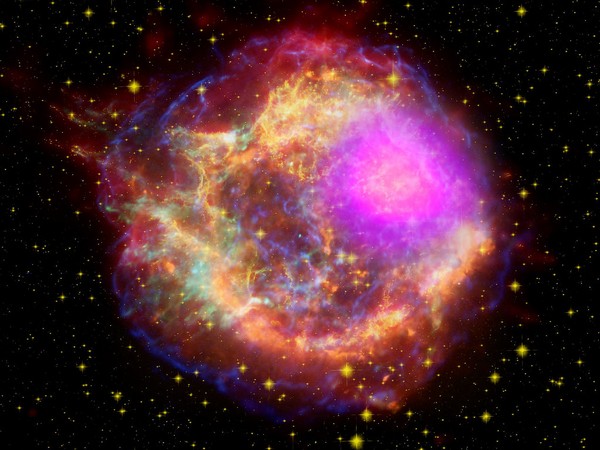Nearby supernova provides insights into how massive stars behave in final years of their lives

An unexpected amount of mass loss in a recently discovered supernova suggests there may be more going on in the last year of a massive star's life than previously thought. Astronomers, led by those at the Center for Astrophysics | Harvard & Smithsonian (CfA), observed SN 2023ixf, a new Type II supernova discovered in May 2023, and found new and unexpected behaviour.
Typically, Type II or core-collapse supernovae produce a flash of light when the shock wave from the explosion reaches the outer edge of the star - a process that occurs within hours of going supernova. However, SN 2023ixf, produced a light curve that didn't seem to fit this expected behaviour.
CfA postdoctoral fellow Daichi Hiramatsu, who led the multi-wavelength observations, and his team analyzed data from the 1.5m Tillinghast Telescope, 1.2m telescope, and MMT at the Fred Lawrence Whipple Observatory as well as data from the Global Supernova Project to better understand the supernova's shock breakout
"The delayed shock breakout is direct evidence for the presence of dense material from recent mass loss," said Hiramatsu, adding that such extreme mass loss is atypical of Type II supernovae. "Our new observations revealed a significant and unexpected amount of mass loss— close to the mass of the Sun— in the final year prior to explosion."
The discovery challenges the standard theory of stellar evolution and the supernovae they become eventually. The new observations point to potential instability in the last years of a star's life, resulting in extreme mass loss.
Along with the multi-wavelength observations, Edo Berger, professor of astronomy at Harvard and CfA, and Hiramatsu's advisor, conducted millimeter-wave observations of the supernova using CfA's Submillimeter Array (SMA) in Hawaii.
"SN 2023ixf exploded exactly at the right time. Only a few days earlier we commenced a new ambitious three-year program to study supernova explosions with the SMA, and this nearby exciting supernova was our first target," Berger said.
SN 2023ixf was discovered by amateur astronomer Kōichi Itagaki on May 19, 2023, from his private observatory in Japan's Okayama. It lies about 20 million light-years away from Earth, in the Pinwheel Galaxy
- READ MORE ON:
- Supernova SN 2023ixf
- supernova
- stellar evolution
- Type II supernova










